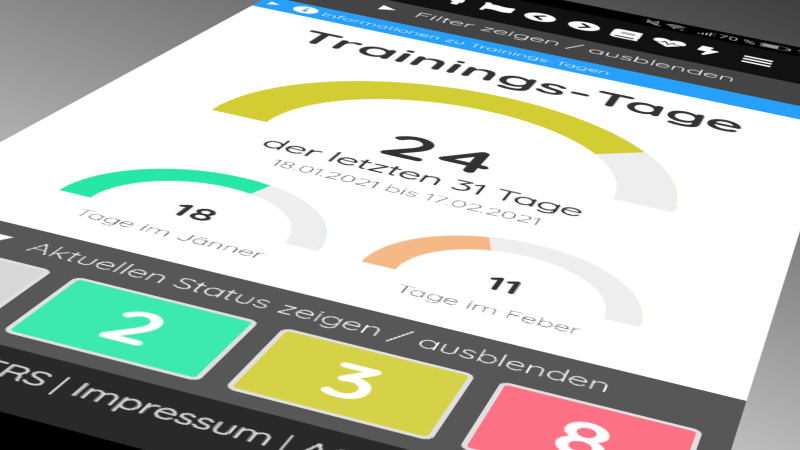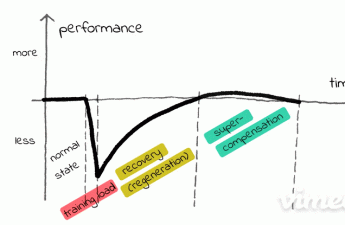The critical question was: “24 training sessions in 31 days – is there enough time for regeneration?” It was posed by lawyer and marathon runner Andreas Kadletz (on Instagram: @kadletzandreas). And yes, this question is important enough to be answered in a blog post.
Preach water and drink wine?
So, what – on the one hand, here at myTRS there is always talk of “regeneration-based build-up training”, but on the other hand, it is pointed out with pride and satisfaction on my part when I have completed a workout on 24 out of 31 days. How does that fit together?
Thank you, Andreas, for your critical and absolutely justified question! You have given the impulse to briefly illuminate a topic that probably also occupies many people in training.
The load in weight training
Let’s take a very brief look at what training for strength or muscle mass is all about: it always involves relatively intense tension that causes microscopic tears (called micro-trauma) in the structures under stress. The “mini-traumas” are a normal part of training and are ultimately responsible for making muscles bigger and stronger afterwards.
Regeneration and supercompensation
The regeneration that begins directly after training primarily serves to repair this damage that has occurred: the muscle cells are busy closing the small tears again. The result is then a fully functional muscle cell that has not suffered any permanent damage.
But the most exciting aspect only becomes visible after the regeneration is complete: Due to an excessive restoration of the damaged structures, the muscle becomes a little bit stronger (or more voluminous) than before – this phase is often referred to as supercompensation. Strength athletes try to take advantage of this effect by setting the next training stimulus at this minimally higher performance level: Due to the increased performance capacity, they can train particularly hard in order to set the next build-up impulse.
The ultimate flexible split training?
The approach of “regeneration-based build-up training”, on which myTRS is based, now proposes to consider the daily current load or recovery states of the different muscle parts separately from each other every day and then to train on these days only those muscles that have already arrived at the phase of supercompensation. Or, to put it differently: Which are again “ripe” for the next training.
Since a variety of exercises are used in the build-up training, which place different loads on the individual muscles, there is also always a different load distribution. This leads to the fact that myTRS also always suggests other exercises that fit the current day: In this way, an extremely flexible split training is created, which combines completely different muscle groups on the individual days.
Not every workout has to take the same amount of time
That’s the point of split training: You don’t train the whole body every day, but only some muscle groups. And with the flexible composition of myTRS, it can happen that on one day only calves and lateral abdominal muscles are trained – and with such a workout you will soon be through. Nevertheless, even days with short workouts count as training days in the evaluation – and give the athlete the good feeling of having stuck with it.
The advantages of flexibility
This approach to one’s own training not only leads to the fact that one always trains different exercises, but also that the matter can never become boring: Each training day is as individual as the daily condition of the training person and increases the joy of exploring the optimal training of one’s own body in a new way again.
Despite all this, myTRS also indicates when the number of training days reaches the limit: The diagram, which always looks at the last 31 days, turns yellow from 23 days and red from 28 days. What the user makes of this is up to him.



